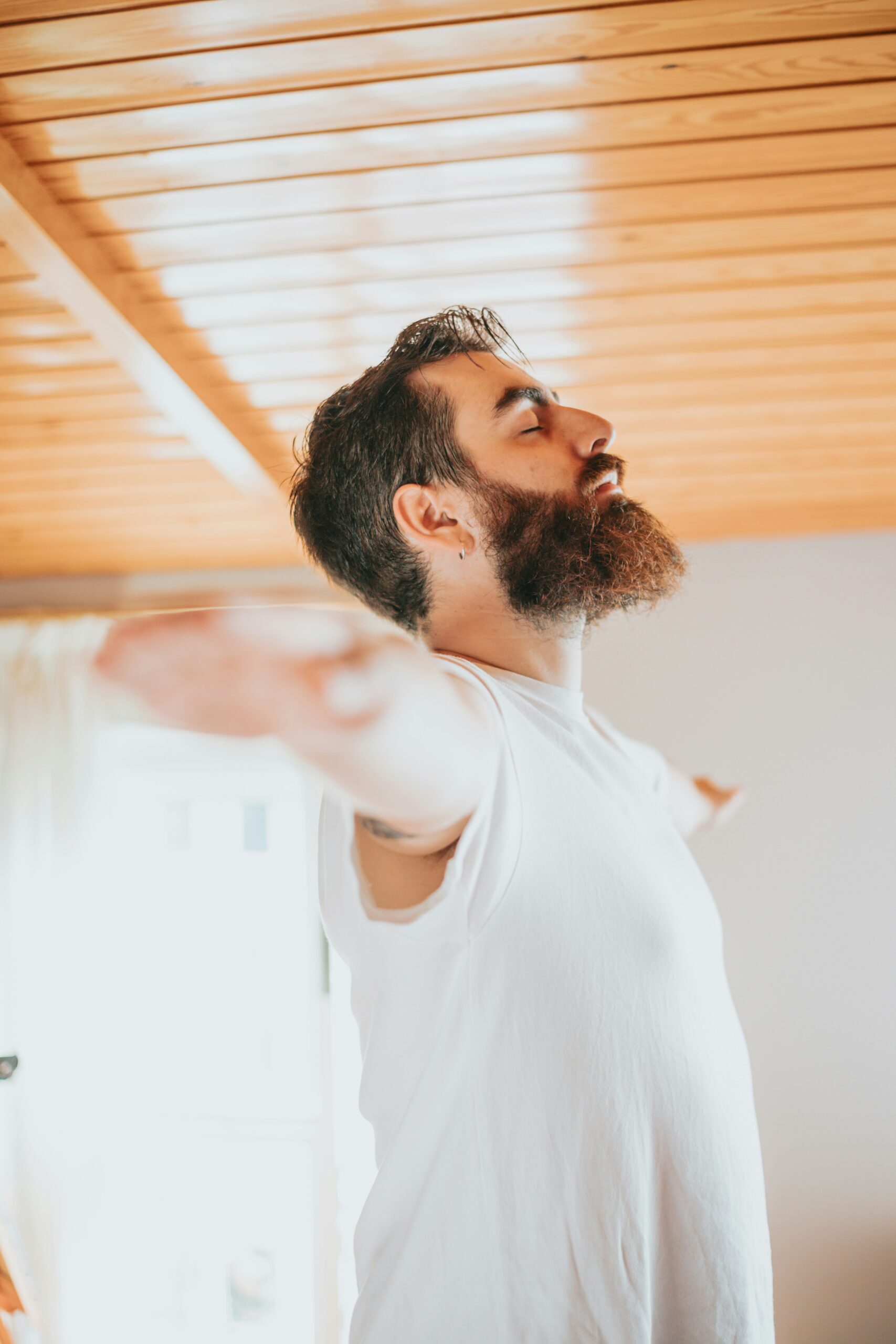What is Mindfulness-Based Stress Reduction (MBSR)?
Mindfulness-Based Stress Reduction, or MBSR, is an evidence-based program combining mindfulness and
meditation to address stress, pain, and challenges in life. Developed by Dr. Jon Kabat-Zinn in 1979 at
the University of Massachusetts Medical School, MBSR brings together ancient mindfulness practices with
modern psychological insights.
The goal? To enhance awareness, cultivate presence, and create a more harmonious relationship with one’s
thoughts and emotions—all while reducing the grip of stress.
Unlike fleeting wellness fads, MBSR has stood the test of time. It’s been scientifically validated in
studies covering anxiety, chronic pain, and even workplace performance.
The Core Techniques of MBSR
The brilliance of MBSR lies in its simplicity. Below are the core techniques that form its foundation.
1. Body Scan Meditation
- Focus on each part of your body, one at a time.
- Notice sensations, tensions, and areas of comfort without judgment.
- Helps develop awareness and reconnects you with your body.
Pro Tip: Start your day with a 10-minute body scan for a grounding morning routine.
2. Mindful Breathing
- Concentrate on your breaths—inhale and exhale slowly.
- It helps anchor your mind when stress or distractions creep in.
Example: Sitting at your desk? Take 3 slow, deep breaths before tackling a tricky email.
3. Mindful Walking
- Pay attention to each step, the way your feet touch the ground, and the rhythm of your walk.
- A calming method to blend mindfulness with physical activity.
Pro Tip: Try mindful walking on your lunch break to reset midday.
4. Loving-Kindness Meditation (Metta)
- Focus on cultivating compassion, for yourself and others.
- Silently repeat affirmations such as, “May I be happy, may I be healthy.”
5. Gentle Yoga or Stretching
- MBSR encourages gentle movements to release physical tension.
- Tune into how your body feels as you move and breathe.
6. Open Awareness Meditation
- This practice encourages a wide awareness of both inner thoughts and the surrounding environment.
Think of it as stepping back and observing life without reacting automatically.
Why Choose MBSR? The Benefits of Regular Practice
MBSR isn’t just about meditation—it’s about tangible transformation. Here’s what you stand to gain by
integrating it into your life.
| Benefit | Impact |
|---|---|
| Reduced Stress | Studies show MBSR lowers cortisol (the stress hormone) levels. |
| Improved Focus | Regular meditation boosts concentration and mental clarity. |
| Better Sleep | Mindfulness can help create a calm, lasting bedtime routine. |
| Pain Management | A study in JAMA showed that MBSR reduces chronic pain without medication. |
| Greater Emotional Resilience | Cultivate healthier responses to challenging situations. |
| Reduced Anxiety | Mindfulness practices are clinically proven to decrease anxiety levels. |
| Lower Blood Pressure | Stress reduction contributes to healthier cardiovascular health. |
| Enhanced Self-Awareness | Recognizing thought patterns helps you make better decisions. |
Statistic Spotlight: A 2014 study by the Journal of Psychosomatic Research
revealed that individuals practicing MBSR experienced a 38% decrease in perceived stress
levels.
Is MBSR Right for Me?
MBSR is versatile, making it suitable for virtually everyone. Whether you’re new to mindfulness or looking
to deepen your meditation practice, its universal appeal benefits individuals of all ages and
lifestyles.
However, like any habit, it requires consistency. Just like you wouldn’t expect immediate results from
going to the gym once, mindfulness works best with steady practice.
Getting Started with MBSR in 6 Steps
Here’s how you can begin (or refine) your MBSR practice today:
- Set aside time. Reserve 10-20 minutes daily to start. Consistency is key—pick a time
that works best for you. - Choose a quiet space. Find a place where you won’t be disturbed, such as a cozy
corner at home. - Follow a guided session. Use apps like Headspace, Insight Timer, or YouTube for
free MBSR-guided meditations. - Focus on one technique. Begin with one, like mindful breathing or body scan, before
expanding your practice. - Be patient with yourself. Your mind will wander—that’s normal. Gently bring it back
to the present without judgment. - Join an MBSR program. Consider enrolling in an MBSR course online or locally for
structured group practice.
Common FAQs About MBSR
1. Do I need meditation experience to start MBSR?
Not at all! These techniques are designed for beginners and experts alike.
2. How long will it take to feel the benefits?
Many people experience reduced stress levels within weeks of consistent practice.
3. Can I practice MBSR during a busy day?
Yes! Techniques like mindful breathing and walking can easily fit into your routine.
4. Are there certified MBSR teachers?
Yes, search for certified instructors to ensure an authentic program experience.
Find Calm, One Breath at a Time
Mindfulness-Based Stress Reduction is more than a stress relief technique—it’s a gateway to a more
present, harmonious life. With its proven benefits and simple techniques, MBSR is actionable for anyone
looking to reduce stress while unlocking clarity and balance.
Remember, mindfulness isn’t about perfection—it’s about showing up for yourself. Start small, stay
consistent, and see how MBSR transforms your stress into strength.
Looking for guided support? Explore our free resources or join one of the trusted MBSR programs we
recommend.

Leave a Reply